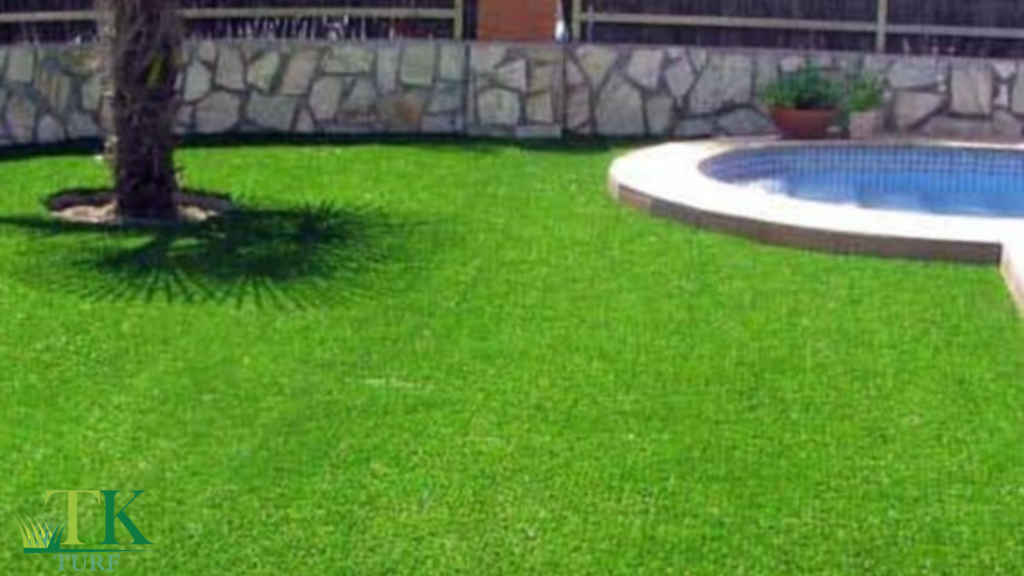Synthetic turf offers a low-maintenance alternative to natural grass, but it still requires some care to keep it looking its best and functioning properly. Here are detailed steps on how to properly maintain your synthetic turf.
1. Regular Cleaning
Keeping your synthetic turf clean is essential for both aesthetics and hygiene.
- Remove Debris: Regularly remove leaves, twigs, and other debris. Use a leaf blower, broom, or rake with a plastic tines to avoid damaging the turf fibers.
- Spot Cleaning: For small spills or stains, clean the area with a mixture of mild soap and water. Gently scrub with a soft cloth or brush, then rinse thoroughly with water.
- Pet Waste: Remove solid pet waste promptly and rinse the area with water. For urine, rinse the affected area with water to prevent odors. Use a turf deodorizer if necessary.
2. Brushing and Grooming
Brushing your synthetic turf helps keep the fibers upright and maintains its natural look.
- Regular Brushing: Use a stiff-bristled broom or a power brush to brush the turf fibers. Brush against the grain to lift the fibers and keep them upright.
- High Traffic Areas: Pay special attention to high-traffic areas, which may require more frequent brushing to prevent matting.
3. Infill Maintenance
Infill helps support the turf fibers and provides cushioning. Proper infill maintenance ensures the turf remains functional and safe.
- Check Infill Levels: Regularly check the infill levels, especially in high-use areas. Add more infill material as needed to maintain the proper level.
- Redistribute Infill: Periodically brush the turf to redistribute the infill evenly. This helps prevent uneven wear and maintains the cushioning properties.
4. Weed and Moss Control
While synthetic turf is resistant to weeds and moss, some may still appear.
- Preventative Measures: Apply a weed barrier during installation to minimize weed growth. Use a weed killer specifically designed for synthetic turf if necessary.
- Manual Removal: Remove any weeds or moss that appear manually. Be cautious not to damage the turf backing.
5. Stain and Odor Management
Prevent and manage stains and odors to keep your turf looking and smelling fresh.
- Avoid Harsh Chemicals: Do not use bleach, acetone, or other harsh chemicals on synthetic turf, as they can damage the fibers.
- Turf Cleaners: Use cleaners specifically formulated for synthetic turf to remove stains and control odors. Follow the manufacturer’s instructions for application.
- Deodorizing: Regularly rinse areas used by pets to prevent odors. Consider using an enzymatic cleaner or turf deodorizer for persistent smells.
6. Seasonal Care
Adapt your maintenance routine to seasonal changes to keep your artificial turf in optimal condition year-round.
- Winter Care: In cold climates, avoid using metal shovels or tools to remove snow and ice, as they can damage the turf. Use a plastic snow shovel or a snow blower instead. Light snow can be left to melt naturally.
- Summer Care: In hot climates, synthetic turf can get hot. Lightly spray the turf with water to cool it down before use.
7. Regular Inspections
Conduct regular inspections to identify and address any issues promptly.
- Check Seams and Edges: Inspect seams and edges for any signs of lifting or damage. Repair any loose or damaged areas to prevent further issues.
- Monitor Wear and Tear: Look for signs of wear and tear, especially in high-traffic areas. Address any issues promptly to maintain the integrity of the turf.
8. Professional Maintenance
Consider periodic professional maintenance to ensure your synthetic turf remains in top condition.
- Deep Cleaning: Professional services can provide deep cleaning to remove embedded dirt and debris that regular cleaning may miss.
- Infill Top-Up: Professionals can assess and top up the infill levels, ensuring even distribution and optimal performance.
- Repairs: Professional maintenance teams can repair seams, edges, and other areas to extend the life of your turf.
Conclusion
Proper maintenance of synthetic turf is relatively simple and ensures that your investment remains attractive and functional for many years. By regularly cleaning, brushing, maintaining infill levels, controlling weeds and moss, managing stains and odors, adapting to seasonal changes, conducting inspections, and considering professional maintenance, you can enjoy a lush, green lawn with minimal effort.
TK Turf
2913 W Cypress St Suite 2, Tampa, FL 33609
(813) 534-4220
https://turfgrasstampabay.com/


Recent Comments